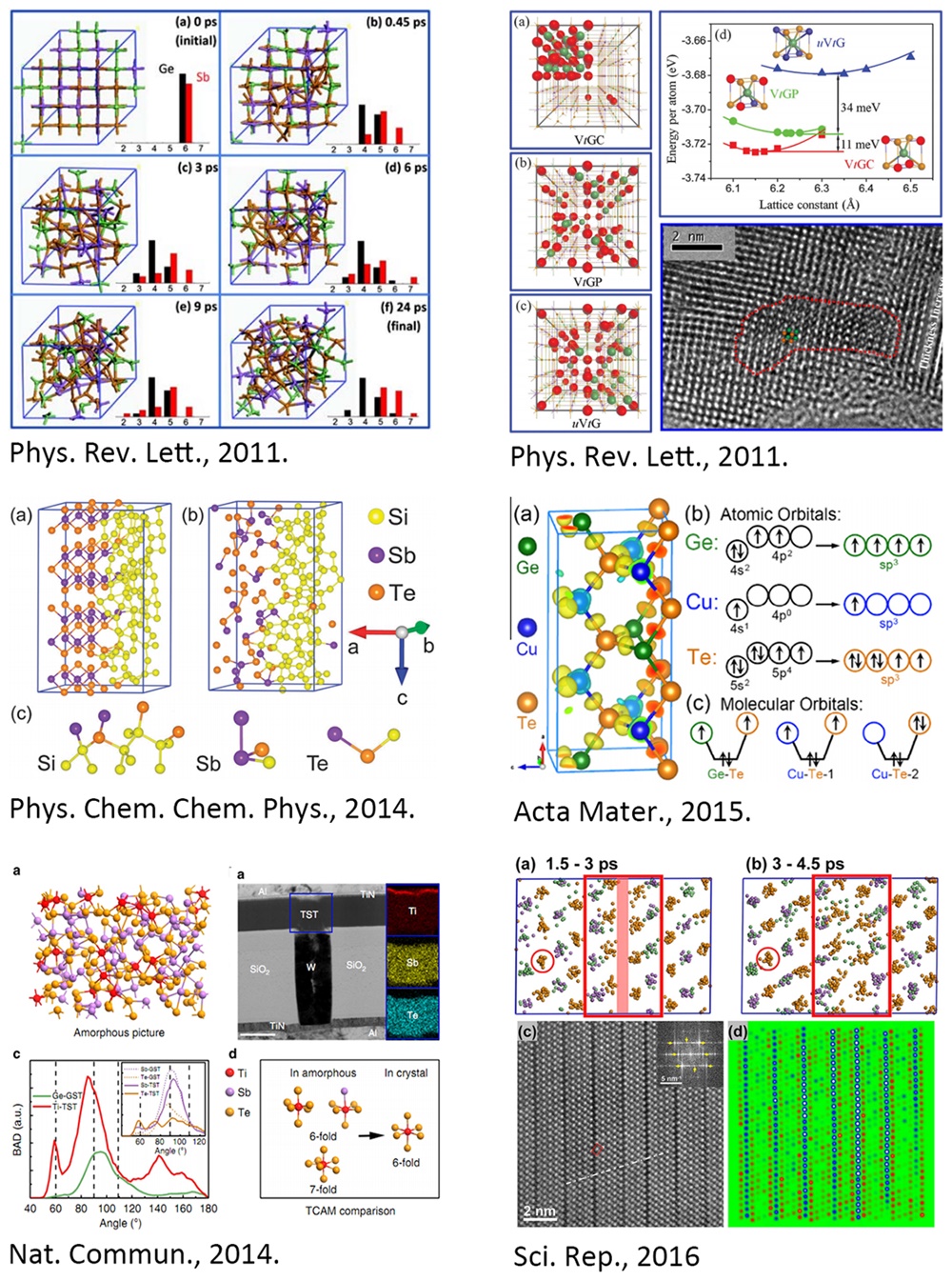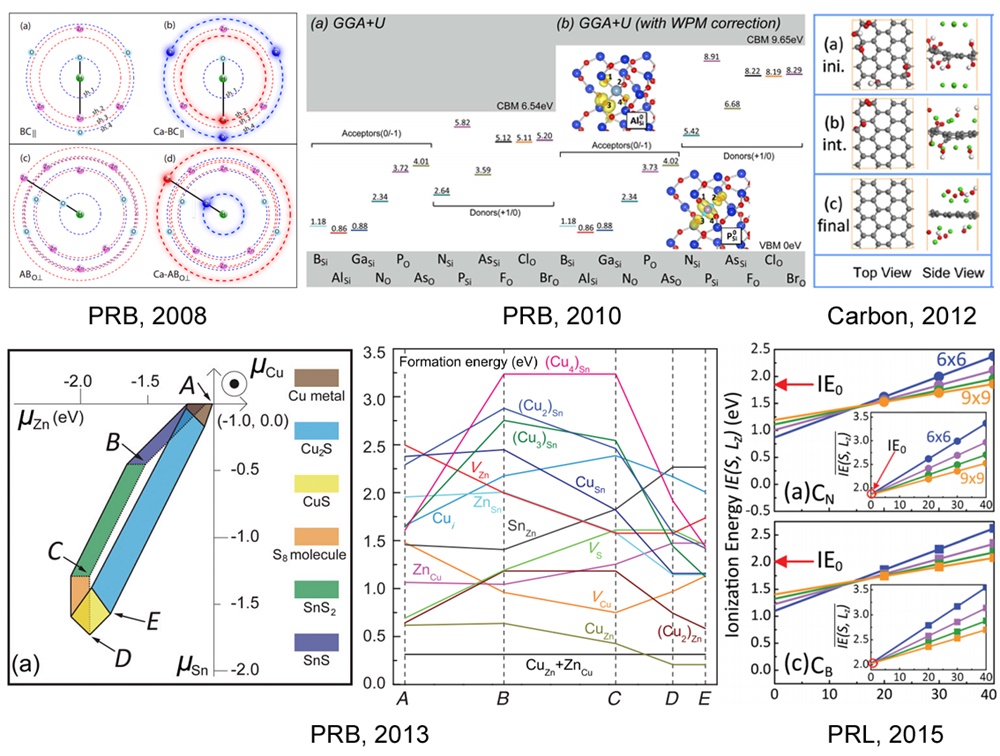
Research Summary
Based on the first-principles calculation, we mainly focus on the key problems in microelectronics and optoelectronics. These topics include (1) doping and defect physics, such as in wide band-gap semiconductors (ZnO and SiO2) and low dimensional semiconductors (MoS2, black phosphorous and BN); (2) phase change storage of Ge-Sb-Te alloys including the mechanism of memory and the design of other new storage material; (3) light-matter interaction, for example ultrafast laser induced non-thermal phase transitions.
Phase Change Memory Physics
As the carrier of civilization inheritance, information storage has been the cornerstone of human development. Moreover, the modern computer information storage is gradually becoming an indispensable part of human life. Phase-change memory (PCM) is one of the most promising next-generation nonvolatile memory technology. The random-access memory based on PCM (PCRAM) show excellent performance which may replace the present DRAM. Such data storage devices depend mainly on PCM materials, which have reversible phase transitions and maintain significant signal contrast. The phase transition can be triggered by an electrical pulse or laser pulse. There are still many unclear physical problems in PCM technology which will no doubt hinder further optimization. Using first-principles calculations, we explore the micro physical mechanisms in PCM to address those problems. We also cooperate with scientists doing experiments to understand the issues more insightful and develop new PCM materials.

Semiconductor Defect Physics
Defect physics is at the heart of semiconductor physics, as the electronic and optoelectronic properties of a semiconductor are often determined by defects, with effects ranging from providing free carriers to acting as undesirable carrier traps and/or nonradiative recombination centers. Therefore, defects playa decisive role in the device performance.Experimental defect identification is typically difficult and indirect, usually requiring an ingenious combination of different techniques. First-principles calculations have emerged as a powerful approach that complements experiments and has become reliable enough to serve as a predictive tool. Based on first-principles calculations, we studied the binding sites of H+ in ZnO; the properties of intrinsic defects in solar-cell material, Cu2ZnSnS4; the impurity effect in SiO2; the defect elimination in the process of graphene oxide reduction. Nowadays, we mainly focus on the defect behavior in the low-dimensional materials. We propose a simple and model-free approach to accurately evaluate the defect properties in two-dimensional systems. And we expect to further explore the carrier (supplied by defect) transport in devices based on two-dimensional materials.
